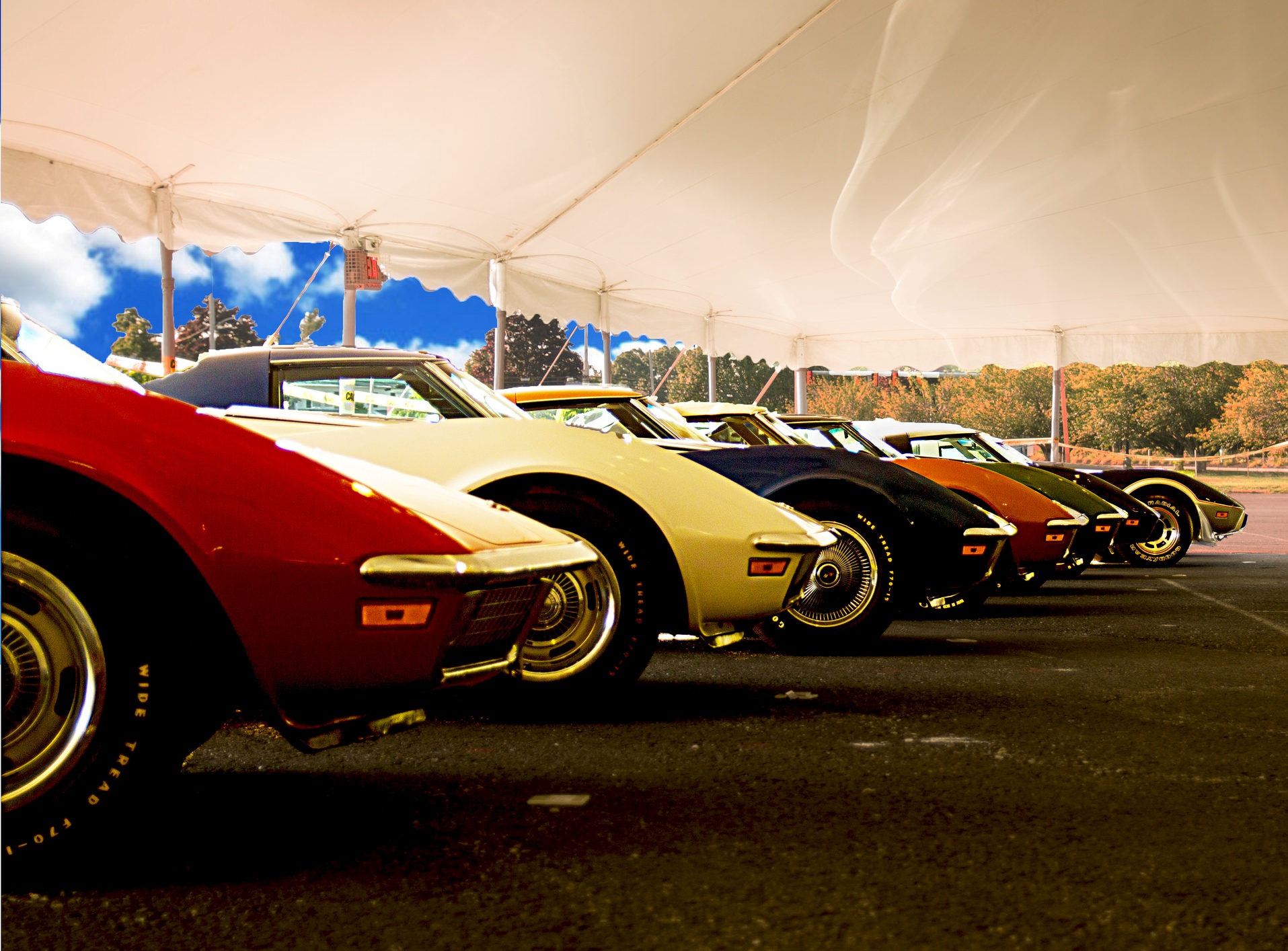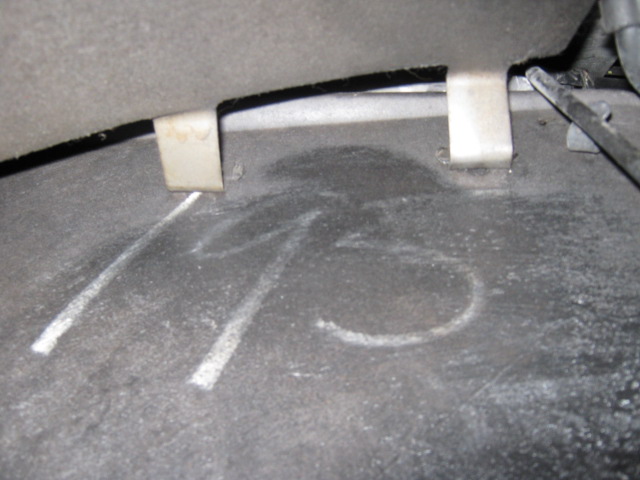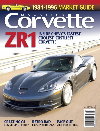C3 technical articles and Corvette Tech Manual & Judging Guides
C3s - The Transition Years
A Presentation for the Michelin April 2022 NCM Bash
Over the years, I've tackled numerous late-model C3 topics but most recently, and the most exciting, was a delivery at the 2022 NCM Bash, that shares a story yet to be told. It describes the connection between 1970s Late-model C3s that compromised the heritage of Corvette performance w ith federal regulations directed to the automotible sector. However, we see how the performance sacrifaces led to unprecedented horsepower gains and performance in twenty-first generations of Corvettes. Titled C3s: The Transition Years tells the story and celebrates the onset of the soft-bumper Corvettes when St Louis Corvette engineers where tasked with fuel efficienty standards, Safety regulations and emission control standards.
I have also brought to fruition, 20 year NCRS late model C3 manuals and worked as an NCRS TIMJG project manager that includes technical writing for the revision of several judging guides. If there is one takeaway lesson from these projects, it is that owners work to change the manual and avoid the temptation to change the car! Too often, stories came forward of owners’ past actions to comply with an outdated manual by changing parts to chase points. Rather the lesson to judges is that when in doubt of originality, the benefit of the doubt goes to the owner.
How Rare is your C3 RPO V54 T-Top Carrier? Publication Pending Corvette Restorer
The assembly, function and materials of the 1977 V54 is considerable different from the 1980-82 V54. Thus, the design differential easily earns a distinction of a first design (1977) versus the second design (1980-82) while both carry the same regular production option (RPO V54) assignment.
RPO ZJ1: 1976-77 Custom Two-Tone Interior. Publication Pending Corvette Restorer
The 7th Edition of the 1963-64 TIMJG
The most popular NCRS Technical Information Manual & Judging Guide, the 7th Edition of the 1963-64 Judging Guide is now on book shelves. The 218 page manual includes colored photos on laminated pages along with detailed sectional table of contents to make this guide truly either a shop-ready or field-friendly manual. The 7th edition comes out ten years after the publication of the 6th edition.
Long Awaited Major Revision of the 1975-77 TIMJG
The first major revision of the 1975-77 NCRS Technical Information Manual & Judging Guide is announced in the Winter 2020 issue of the Corvette Restorer. The 258 page manual includes over 670 colored photos on laminated pages along with detailed sectional table of contents to make this guide truly a field-ready judging manual. The article includes an excerpt regarding the plunger switches from the interior and chassis section that is applicable throughout the C3 production models.
It was during this production period when Corvette production was dramatic, increasing by 21% from 1975 to 1976, and increasing by 28% from 1976 to 1977. Units (cars) built per day increased to 142 in 1977 from 85 in 1973, justifying the cost to build a new assembly plant. As a result, many owners reported parts previously tagged for the next model year, showing up on current build models. Changes of this sort are documented in the related AIM and the sheet marked ROLLING MODEL CHANGE.
While the layout is typical of any NCRS judging manual, the 1975-77 adopts the format rolled out in the 1973-74 manual, making it a field-friendly judging guide that includes at the front of each section both a detailed Table of Contents and List of Tables. The new manual also incorporates the role that build sheets play in reconciling mechanical broadcast codes with those printed on the buildsheet.
Major Revision of the 1973-74 TIMJG
A major revision of the 1973-74 NCRS Technical Information Manual & Judging Guide was announced in the Winter 2019 issue of the Corvette Restorer. The 258 page manual includes over 670 colored photos on laminated pages along with detailed sectional table of contents to make this guide truly a field-ready judging manual. The article includes an excerpt regarding the plunger switches from the interior and chassis section that is applicable throughout the C3 production models.
While the layout is typical of any NCRS judging manual, the 1973-74 adopts a format to shape it as a field-friendly judging guide that includes at the front of each section both a detailed Table of Contents and List of Tables. The new manual also incorporates the role that build sheets play in reconciling mechanical broadcast codes with those printed on the buildsheet.
This article is an overview of the revision to the 1973-74 TIMJG and uses examples to illustrate the revised format.
Buying Right - C3

The third-generation Corvette represents one of the best sports-car buys in today's market. If you're in the market for a C3, the tips in "Buying Right - C3" will help you differentiate between an authentic, well-preserved example and a neglected beater! The articles offers prospective buyers with advice for both mechanical and cosmetic features that with aging, become troublesome. The authors describe what to look for when considering the purchase of a 1968-82 Corvette, this Corvette Magazine 2017 article lists 24 items to explore.
Each tip includes the model year (or years) it affects whether you seek an early 1968-71 with non-functioning fiber-optics or come across a late model C3 with a faulty MAP sensor that was troublesome for new buyers in 1982. Photos are used to further illustrate items to check and address mechanical, exterior, interior and chassis considerations.
Late Model C3 Job Numbers: The Link Between Build Sheet & Body Panel

What is the meaning of those handwritten grease-pencil numbers on the underbody of my late-model C3? For years, factory handwritten marks have been the study, discussion and publication among Corvette enthusiasts. A frequent topic in Corvette forums, and restorers are always encouraged to clean the chassis lightly, document with photography, and spare them if at all possible. This article details the link between job numbers and the GMAD buildsheet while describing factory production methods, the buildsheet, the run sheet and the job number
By mousing over the 1973 job number on the underbody panel, you'll see the buildsheet pre-assigned job number on the buildsheet. Also, shown is the estimated build date (06-22) for this 1973 Corvette. This box was used as the scheduling information box that relates to other factory production schedules for the day. The article first published in the NCRS Corvette Restorer, Spring 2014.
1975-82 Tach Boards
Nearly 95 percent of all late model C3 tach problems result from bad tach boards. Those early tach boards had issues then and few survived the last forty years. What makes them tick and why replace when that tach needle fails to track engine RPMs?
For the first time, those Corvette owners (1975-82) with high-energy ignition systems, are introduced to the early tach board technology, why if fails and when to replace those ealry boards.
1976 - 1978 Corvette Jack Date Codes

Russo's first Corvette article published in the NCRS Corvette Restorer, 24:2, Fall 1997, studied and showed that jack supplier and date codes changed during the 1976 - 1978 production years, thus correcting information in the 1978-79 TIMJG. This study further illustrates the tendency to assume production features, when not confirmed, are reported as like early C3 years. Russo's article illustrates the assumption that late model C3 production is like early C3 production is misleading to Corvette owners.
